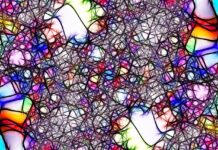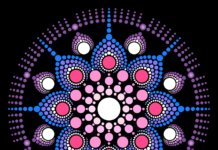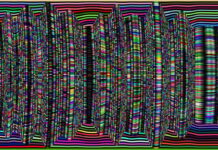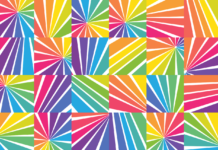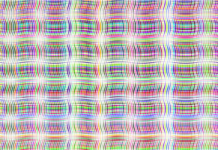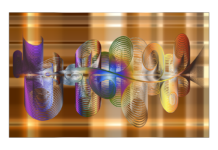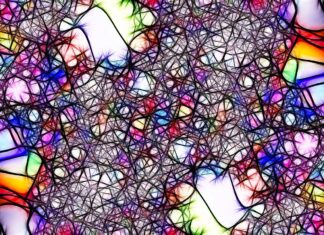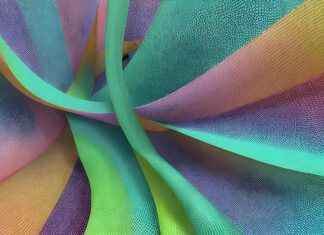YOLOv5 is an object detection algorithm that has gained significant attention and popularity in the field of computer vision. It is an evolution of the YOLO (You Only Look Once) family of models, which aims to provide real-time object detection with high accuracy. YOLOv5 builds upon the success of its predecessors by introducing several improvements and optimizations. Developed by Ultralytics, YOLOv5 offers a streamlined and efficient architecture that can be used for a variety of applications, including autonomous driving, surveillance systems, and robotics.
1. Efficient Architecture: YOLOv5 introduces a streamlined architecture that achieves high accuracy with significantly fewer computational resources compared to previous versions. It utilizes a CSPDarknet53 backbone network, which is a modified version of Darknet53, for feature extraction.
2. Model Variants: YOLOv5 comes in different variants, namely YOLOv5s, YOLOv5m, YOLOv5l, and YOLOv5x, each with different complexities and trade-offs. The variants differ in terms of model size, number of layers, and computational requirements, allowing users to choose the appropriate model based on their specific needs.
3. Improved Object Detection: YOLOv5 incorporates several advancements to improve object detection accuracy. It introduces novel techniques such as focal loss, which helps in handling class imbalance by assigning higher weights to challenging examples during training. The model also employs multi-scale prediction during both training and testing, enabling detection at different resolutions.
4. Training Enhancements: YOLOv5 introduces a range of training enhancements to improve model performance. It includes mosaic data augmentation, which combines multiple images into a single training sample, and random augmentation techniques like rotation, scaling, and translation. These techniques enhance the model’s ability to generalize to various object sizes and orientations.
5. Advanced Inference: YOLOv5 achieves real-time object detection by optimizing the inference process. It utilizes techniques like batch inference, where multiple images are processed simultaneously, and TensorRT integration, which accelerates computation on compatible GPUs. These optimizations significantly improve the model’s inference speed without compromising accuracy.
6. Open-Source Implementation: YOLOv5 is an open-source project, allowing researchers and developers to access the codebase and customize it for their specific needs. The availability of the source code encourages community contributions, leading to continuous improvements and advancements in the algorithm.
7. Data Annotation: To train YOLOv5 effectively, labeled training data is required. The annotation process involves labeling objects of interest in the images with bounding boxes, along with corresponding class labels. Various annotation tools, such as LabelImg and RectLabel, can be used to create the required annotations.
8. Pretrained Models: Ultralytics provides pretrained YOLOv5 models, which are trained on large-scale datasets such as COCO (Common Objects in Context) and can be used for transfer learning. These pretrained models serve as a starting point for training on custom datasets, saving significant time and computational resources.
9. Extensive Community Support: YOLOv5 has gained a strong community following, with active forums and online communities dedicated to discussing, sharing, and troubleshooting the algorithm. Developers can find a wealth of resources, including tutorials, code examples, and model evaluations, to facilitate their implementation and understanding of YOLOv5.
10. Application Flexibility: YOLOv5’s versatility allows it to be applied to various domains and tasks. It can detect and track objects in real-time videos, perform object recognition in images, and even handle scenarios with large-scale datasets. Its flexibility and efficiency make it suitable for both research and production environments.
In summary, YOLOv5 is an advanced object detection algorithm that offers significant improvements in YOLOv5 is an object detection algorithm that has gained significant attention and popularity in the field of computer vision. It is an evolution of the YOLO (You Only Look Once) family of models, which aims to provide real-time object detection with high accuracy. YOLOv5 builds upon the success of its predecessors by introducing several improvements and optimizations. Developed by Ultralytics, YOLOv5 offers a streamlined and efficient architecture that can be used for a variety of applications, including autonomous driving, surveillance systems, and robotics.
YOLOv5, YOLOv5, YOLOv5. These three words represent an advanced and powerful object detection algorithm that has revolutionized the field of computer vision. YOLOv5 is the latest iteration of the YOLO family of models, focusing on real-time object detection with remarkable accuracy. Developed by Ultralytics, YOLOv5 introduces numerous enhancements and optimizations that make it a go-to choice for a wide range of computer vision applications.
The first important thing to know about YOLOv5 is its efficient architecture. YOLOv5 utilizes a CSPDarknet53 backbone network, which is a modified version of Darknet53, for feature extraction. This architecture allows for high accuracy while significantly reducing computational resources compared to previous versions. By optimizing the network structure, YOLOv5 achieves impressive performance without sacrificing efficiency.
Secondly, YOLOv5 comes in different variants, namely YOLOv5s, YOLOv5m, YOLOv5l, and YOLOv5x. These variants offer different complexities and trade-offs, allowing users to choose the model that best suits their specific requirements. Whether you need a lightweight model for embedded devices or a more powerful one for demanding applications, YOLOv5 provides the flexibility to cater to diverse needs.
One of the key advancements in YOLOv5 is its improved object detection capabilities. The model introduces novel techniques such as focal loss, which helps handle class imbalance during training. By assigning higher weights to challenging examples, YOLOv5 improves its ability to detect objects accurately, even in scenarios with imbalanced class distributions. Additionally, YOLOv5 employs multi-scale prediction during both training and testing. This means that the model can detect objects at different resolutions, enhancing its ability to handle objects of varying sizes in real-world scenarios.
YOLOv5 also brings several enhancements to the training process. It introduces mosaic data augmentation, which combines multiple images into a single training sample. This augmentation technique enhances the model’s ability to generalize to different object sizes and orientations. Random augmentations such as rotation, scaling, and translation are also applied to augment the training data, further improving the model’s robustness and generalization capabilities.
Another important aspect of YOLOv5 is its advanced inference optimizations. To achieve real-time object detection, YOLOv5 incorporates techniques such as batch inference and TensorRT integration. Batch inference involves processing multiple images simultaneously, effectively parallelizing the computation and reducing the inference time per image. TensorRT integration optimizes the model’s computation on compatible GPUs, resulting in accelerated inference speed without compromising accuracy.
It is worth noting that YOLOv5 is an open-source project. This means that the source code is publicly available, allowing researchers and developers to access and customize the algorithm according to their specific needs. The open-source nature of YOLOv5 encourages community contributions, fostering continuous improvements and advancements in the algorithm.
To train YOLOv5 effectively, labeled training data is required. The annotation process involves labeling objects of interest in the images with bounding boxes, along with corresponding class labels. Various annotation tools, such as LabelImg and RectLabel, can be used to create the required annotations. These annotations serve as the ground truth for training the YOLOv5 model, enabling it to learn and recognize objects accurately.
Ultralytics provides pretrained YOLOv5 models that are trained on large-scale datasets such as COCO (Common Objects in Context). These pretrained models serve as a starting point for training on custom datasets. By leveraging transfer learning, users can save significant time and computational resources by initializing their models with pretrained weights and fine-tuning them on their specific datasets.
The YOLOv5 algorithm has gained a strong community following, with active forums and online communities dedicated to discussing and sharing knowledge about the algorithm. Developers and researchers can find a wealth of resources, including tutorials, code examples, and model evaluations, to facilitate their implementation and understanding of YOLOv5. The community support and engagement around YOLOv5 contribute to its continuous development and improvement.
YOLOv5 is a versatile algorithm that can be applied to various domains and tasks. It excels at real-time object detection and tracking in videos, enabling applications such as video surveillance and autonomous vehicles. Additionally, YOLOv5 performs object recognition in images, making it suitable for tasks like image classification and localization. Its flexibility and efficiency make it a valuable tool for both research and production environments.
When working with YOLOv5, it is essential to have a good understanding of the dataset and its characteristics. The model’s performance heavily relies on the quality and diversity of the training data. Collecting a well-annotated dataset that covers a wide range of object classes and variations will greatly contribute to the model’s accuracy and generalization capabilities.
YOLOv5 supports various hardware platforms, including CPUs, GPUs, and specialized accelerators. This allows users to deploy the algorithm on different devices, depending on their specific requirements. Whether you need real-time inference on edge devices or high-performance computing on powerful servers, YOLOv5 can be optimized and tailored accordingly.
Evaluation metrics play a crucial role in assessing the performance of YOLOv5 models. Common metrics used in object detection include mean Average Precision (mAP), which measures the precision and recall of the detected objects, and Intersection over Union (IoU), which quantifies the overlap between predicted and ground truth bounding boxes. Understanding these metrics and their interpretation is vital for evaluating and fine-tuning the performance of YOLOv5 models.
The development of YOLOv5 is an ongoing process, with continuous updates and improvements being made by the Ultralytics team and the wider community. Staying updated with the latest releases and advancements in YOLOv5 is crucial to take advantage of new features, optimizations, and bug fixes.
In conclusion, YOLOv5 is a powerful object detection algorithm that offers significant improvements in accuracy and efficiency compared to its predecessors. Its efficient architecture, improved object detection techniques, training enhancements, and advanced inference optimizations contribute to its success. With its open-source nature, pretrained models, and extensive community support, YOLOv5 has become a popular choice for various computer vision applications. Understanding the key concepts and considerations of YOLOv5 will empower developers and researchers to leverage its capabilities effectively and achieve accurate and real-time object detection.



